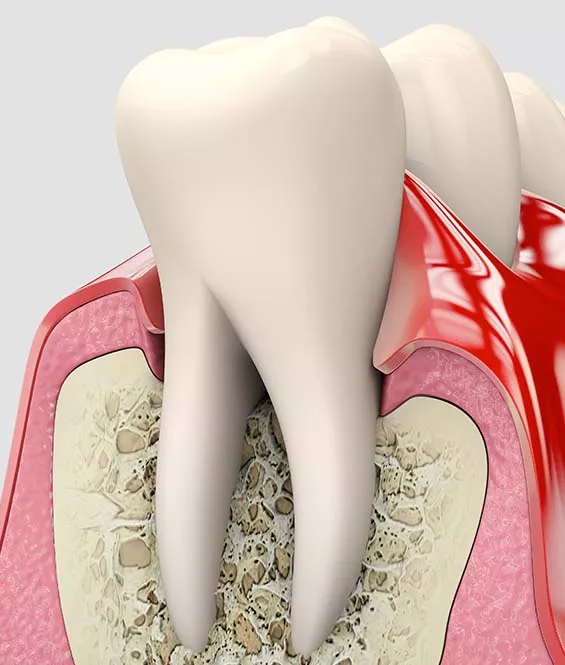Keep Your Gums Healthy
Your gums play a vital role in your oral health. The gums protect the vulnerable roots of your teeth, along with your jawbones and other tissues. Periodontal treatments help keep your gums healthy.

Gum Disease
Gum disease is caused by a severe bacterial infection of the gums and surrounding tissue. It can cause chronic halitosis (bad breath) and tooth loss and has been linked to heart disease and diabetes. Symptoms of gum disease include bleeding, sore or receding gums, and loose teeth.
Extractions
Extractions are performed when a damaged tooth presents a risk to your gums and other teeth and needs to be removed. Extracted teeth can be restored with a bridge or dental implant after the procedure.
Frenectomy
Frenectomy is used to treat tongue or lip-tie in children. These conditions occur when the connective tissue inside the mouth is too tight and causes discomfort and impairment of speech and eating. Treatment includes surgically cutting or removing the tissue to relieve the tension and free the tongue or lips.
Scaling and Root Planing
Root planing and scaling are advanced hygiene techniques that are used to remove hardened plaque and tartar from above the gum line to prevent decay and gum infections.
Video: Scaling
Frequently Asked Questions
How is gum disease linked to heart disease?
Medical research indicates that gum disease causes an increase in inflammation in the body, which increases the risk of inflammatory diseases such as heart disease.
Is there a link between gum disease and diabetes?
Studies suggest that gum disease and diabetes may have a two-way link. Good gum health positively affects blood sugar levels, which can help reduce the risk of developing diabetes. In turn, diabetes can make the body more vulnerable to developing infections such as gum disease.
What’s the difference between plaque and tartar?
Plaque is a naturally occurring biofilm that forms on the surface of your teeth and provides a home to decay-causing bacteria. The bacteria secrete acids that can irritate your gums and make them vulnerable to gum disease. The acids also damage the enamel of the teeth and can lead to the formation of cavities.
Tartar is plaque that has hardened into a mineral-like substance. Tartar usually forms at the bottom of your teeth. It’s harder than bone and can’t be removed with a toothbrush or dental floss. If tartar is allowed to build up, it will irritate the gums and make them vulnerable to infection and gum disease. Tartar is removed by a trained dental hygienist using special tools.
